Almost 2 weeks ago I had a chance to visit the newly built pride and beauty of the 2008 Beijing summer Olympics – Beijing National Stadium (å??京å?½å®¶ä½?è?²å?º), also known as “Bird’s Nest” (鳥巢) during the hosting of “Good Luck Beijing 2008 SOHU.COM China Athletics Open”. It was a kind of audition before the Olympic Games and I would allow myself to make a short unprofessional review or better just call it impressions I got.
The stadium looks amazing from both inside and outside and it is definitely one of the most spectacular architectural constructions I ever seen. It has become already an iconic image for the 2008 Beijing Olympics and souvenirs representing the stadium are already sold out in the streets. Surely the architects Pierre de Meuron and Jacques Herzog have done a great job when designing this beauty that does look like a bird’s nest actually. And I’m glad that Chinese officials have chosen this plan among other projects presented, although there was one plan (B12) with a unique suspending retractable roof which was worth a second thought. The stadium was open in March 2008, but some final constructions and surrounding area preparations are still being done. You’ll notice in the pictures below the elevator steps of the new Olympic subway line with the “Bird’s Nest” in the background, some workers completing final touches, one of the bronze sculptures displayed at the Olympic Green and improvised hand-written directions sign directing visitors to Beijing National Stadium.
Interesting facts: The stadium construction costs rises to 4 billion RMB which is around 500 million USD and the stadium was built mostly on money which came from donations. The ground was broken on Christmas Eve in December 2003 and it took 4 years to complete the project. It was built with 36 km of unwrapped steel, with a combined weight of 45,000 tonnes. 10 workers had died during the stadium’s construction.
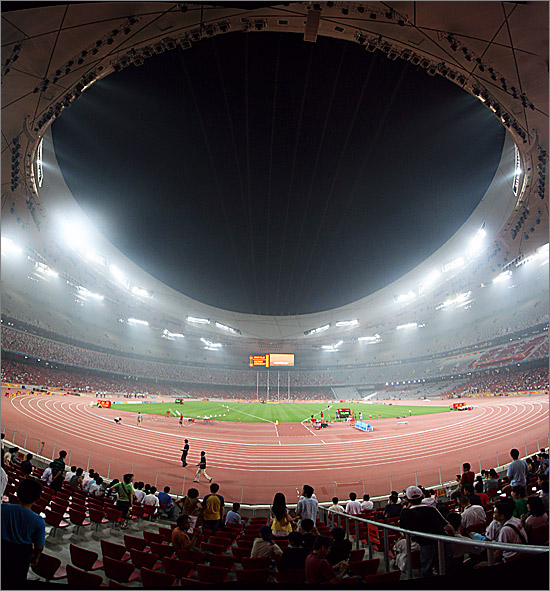
The arena looks awesome from the inside and it is here where you can actually feel the grandeur of this superb construction. It is just huge and despite the fact that is can host 91.000 people it doesn’t feel crowded. The halls inside are large and there are enough entrances/exits to avoid overcrowding, also they opted for more smaller access gates to the seats rather then bigger ones. Overall I got a positive impression, but there are still some things that need to be done, like hiding these awful metallic bars with cable ties and electric/sound cables on the edge of second floor tribune (see the pictures below) or seriously review the menu for the snacks booths inside the stadium (you can also view the menu in the picture below). The only appealing thing for westerners from this menu was “hot-dogs” (which by the way are nothing like the hot-dogs you know), but it was missing from all the booths I asked while there, never minding the unclear price. Prices were actually unexpectedly low, which is a great thing, hope it stays the same during the Olympics (although I doubt that). They were also selling cold beer in cans on the stadium from “Yanjing” (the best Chinese beer if you ask me) for just 5 RMB and drinking tap water is available from many places (see the picture below). The VIP seats located in between second and third floor tribunes are wrapped in soft fabrics and they are still putting it in on all the seats (picture below).
The staff working on the stadium, mostly volunteers I suppose, are all young and eager to help you and speak a good English, well organized as well. The girl in the picture here is standing in the lane between the raws and will direct and assist the visitors, also monitoring the things that happened around.
The atmosphere on the stadium was great and the Chinese public presented there during “Good Luck Beijing 2008 China Athletics Open” was very welcoming and excited about the event. All the Chinese people I think are very glad about them being the hosts of such an event and want to show the best they have.
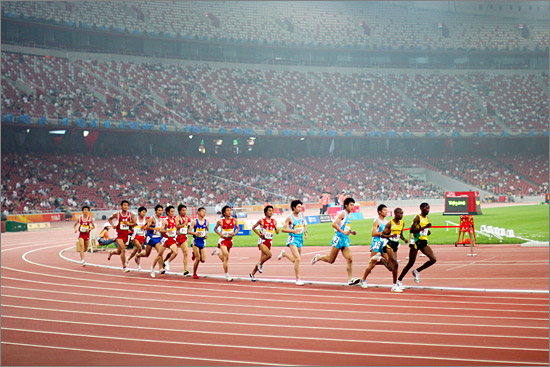
For more quality and high-resolution pictures of the Beijing National Stadium during day and night, from inside and outside please visit my Beijing Olympics related photographs presented on Alamy. They are licensed for Editorial use only but you can also enjoy viewing them as well.
UPDATE: Since many of you were looking for the stadium plan I also wrote another article on Olympic Stadium seats and plan.

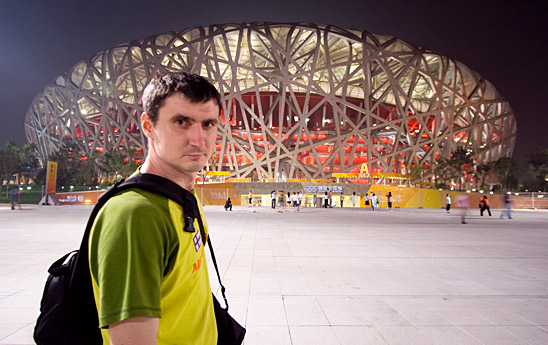
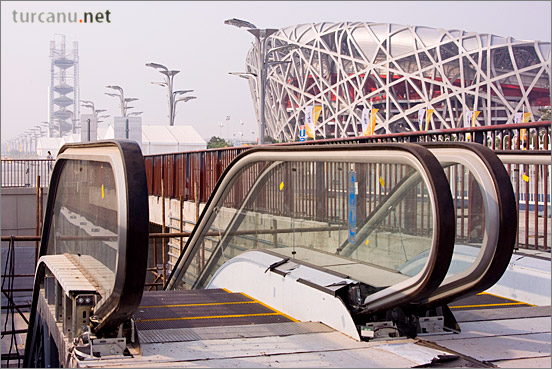
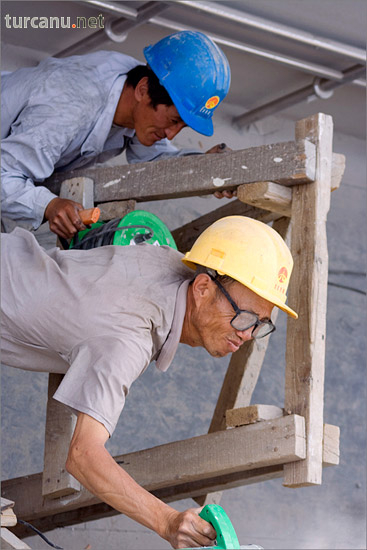
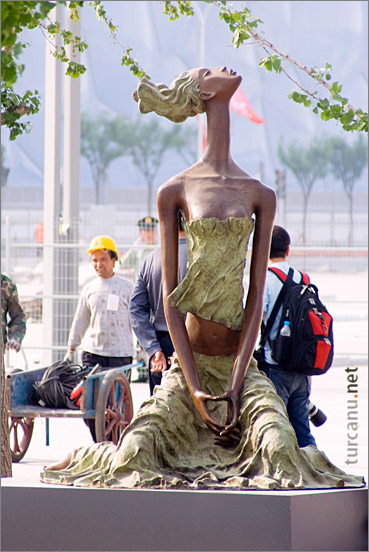
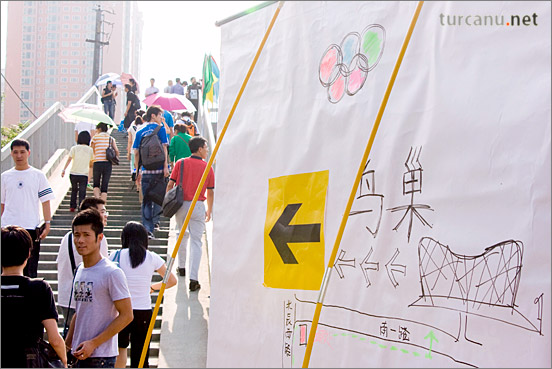
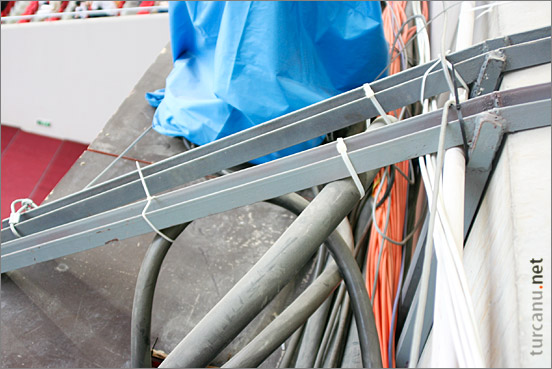
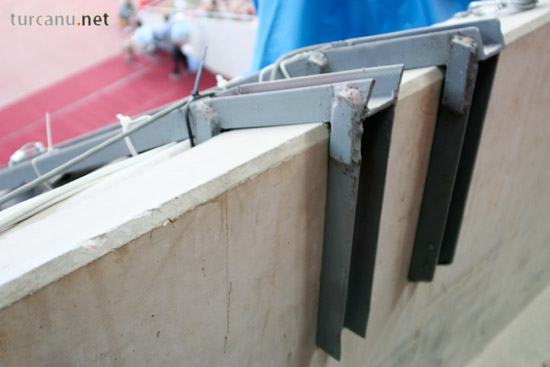
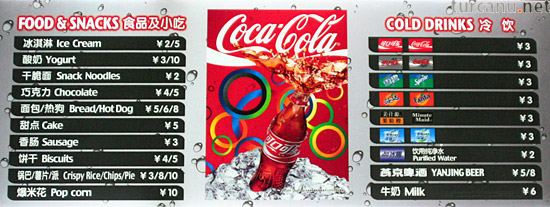
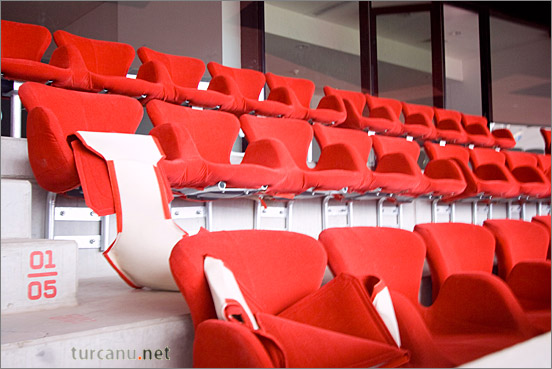
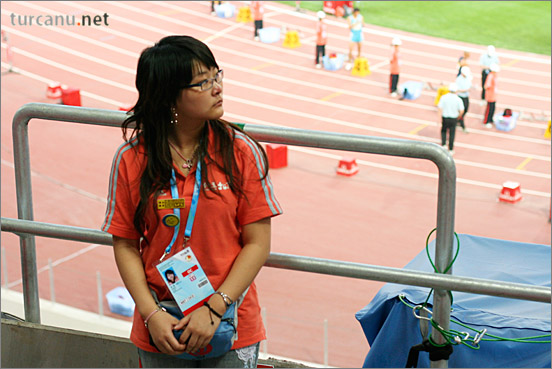
Well done review, the stad looks amazing!
Pingback: Plan and seats of the Olympic Stadium in Beijing » turcanu.net
very nice coverage of the stadium from its design point view
im interested more in knowing if there are car parks as part of the stadium…any for how many cars